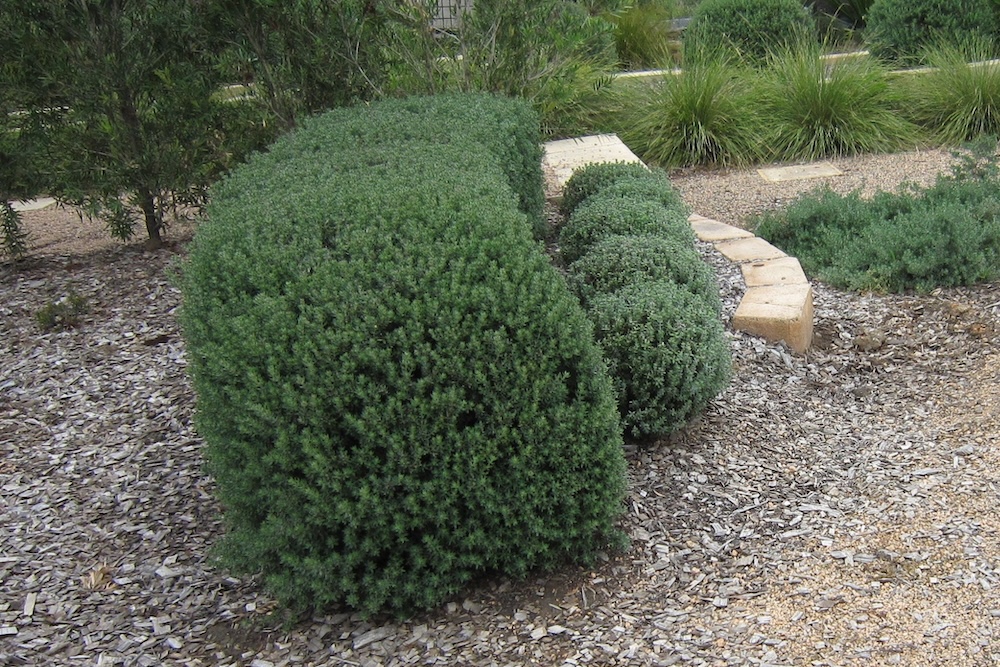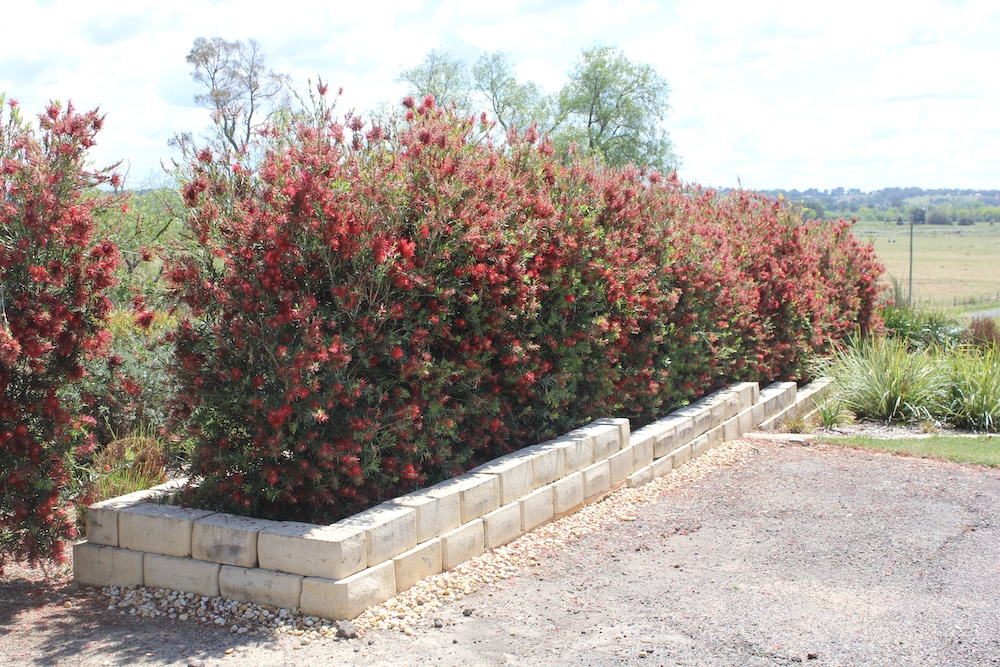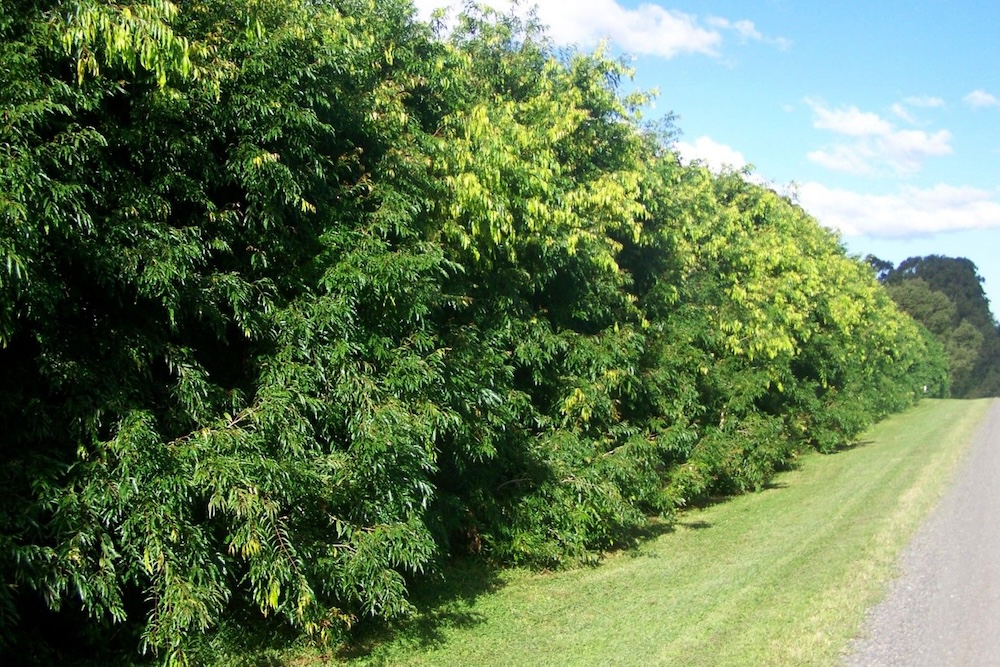Did you know that some of the plants we always thought were native to Australia are actually from Southern Africa?
Best Australian Native Hedge Plants: Westringias, Lilly Pillies, Bottlebrushes, and More
Are you looking to add a touch of natural beauty to your garden or landscape while also supporting local ecosystems? Have you considered using native Australian plants for your hedges?
Hedges are great for screening and privacy, forming natural boundaries and add textural beauty to our spaces. They’re also great for providing habitat and food for our locally indigenous wildlife – as long as you choose the right plants, of course.
A good hedge plant is typically hardy, easy to maintain, adaptable to different conditions, and has the ability to respond positively to regular “shearing” cuts, bouncing back each time with vigorous growth. A number of native Aussie plants tick all of these boxes.

Why Choose Australian Native Plants for Hedges?
Choosing native Australian plants for hedges offers a plethora of benefits.
Firstly, these plants have a special place in our hearts as Australians. They’re a source of national pride and we love them.
Secondly, Aussie natives tend to be quite tough – particularly the cultivars we’ve bred at Ozbreed. The urban environment is a harsh place for any plant to live, and many exotic plants are simply too fussy to bother with.
Thirdly, they play an important role in supporting local ecosystems by providing habitat and food sources for native wildlife. Certain native pollinators will prefer certain native plants – this is a complex and nuanced topic.
It does have to be said, though, that it’s an oversimplification to say the “natives are good for biodiversity and exotics are bad” because certain exotic plants can perform a lot of similar ecological services as native plants.
However, all of the native plants we’ll be discussing below are a massive boon for native wildlife and you really can’t go wrong with one or more of them.

Exploring the Best Australian Native Plants for Hedges
In this section, we’ll explore some of the best Aussie native plants for hedging, which all have been shown to respond well to hedge pruning and are well-known for the resilience in the urban landscape.
All of them have an abundance of flowers that will attract pollinators, including birds, insects and sometimes mammals.
We’ll be focusing on plant genera (plural of genus), rather than individual species or varieties. That means we’re going to be speaking generally, because each species within each genus has their own personality, and cultivated varieties can perform differently from natural species because of their breeding.
Westringias (Westringia spp.)
Westringias, commonly known as coastal rosemary, sport grey-green foliage and small, delicate flowers. They’re robust and hardy, often requiring little maintenance once established, making them an ideal choice for hedges.
On top of that, many westringias are tolerant of a variety of soil types and can withstand coastal conditions, including salt spray. This makes them particularly suitable for seaside gardens. Some westringias will flower all year round, with the most profuse flowering happening in spring.
Lilly Pilly (Syzygium spp., Acmena spp., Waterhousea spp.)
Lilly pillies are renowned for their glossy foliage and colourful, edible fruit. These versatile natives are typically rainforest plants which can be pruned to various shapes and sizes, making them a popular choice for hedging.
They come in three genera: Syzygium, Acmena and Waterhousea – although the Acmena genus has been regrouped scientifically into Syzygium, many of us still refer to those plants with their old name.
Acmena is known for its compact growth and beautiful coppery new growth. Syzygium species, on the other hand, have larger leaves and are often used for taller hedges or screens. Waterhousea is known for its weeping habit and is ideal for creating a softer, more relaxed hedge.
Acmena plants generally flower in spring, while Syzygium and Waterhousea plants flower in summer.

Callistemons (Callistemon spp.)
Callistemons, or bottlebrushes, are characterised by their vibrant, brush-like flowers and evergreen foliage. They’re one of the best Australian plants for attracting rainbow lorikeets and an abundance of generalist insect pollinators, including predatory insects like hoverflies and micro wasps.
Most callistemons will flower in spring and summer.
Correas (Correa spp.)
Correas are evergreen shrubs known for their attractive, bell-shaped flowers. They make excellent hedges due to their dense growth habit and ability to thrive in a variety of conditions. They’re another favourite among bird-lovers, as their nectar-rich flowers attract a variety of native birds as well as insects.
Correas tend to flower from autumn through spring, with their most intense flowering happening as the weather warms.
Grevilleas (Grevillea spp.)
Grevilleas are loved for their spectacular, nectar-rich flowers and varied sizes. Their hardiness and year-round appeal make them a desirable choice for hedging. Some grevilleas have small, subtle flowers, while others have giant, alien-looking inflorescences.
They tend to flower all winter long, providing our native birds and insects a reliable, much-needed resource when there are fewer flowers around.
Salt Bush (Atriplex spp.)
Salt bush is highly tolerant of salty soils and drought conditions, making it a standout choice for hedges in more challenging environments. These hardy plants have silver-grey foliage that provides a beautiful contrast in a garden setting.
They can also be used for culinary purposes, although their hedge clippings don’t smell great when they’re sitting in the trailer or the compost pile. Aussie salt bushes tend to flower in autumn to early winter.
Melaleucas (Melaleuca spp.)
Melaleucas, also known as paperbarks or honey-myrtles, are recognised by their spongy bark and bottlebrush-like flowers. They’re closely related to callistemons, and have similar, but smaller, fuzzy inflorescences.
Some melaleucas make better hedges than others, and different species will flower at different times of the year. Melaleuca linariifolia, a popular hedge in Brisbane and Sydney, flowers in spring to summer.
How to Choose and Plant Your Hedge
Factors to Consider When Choosing a Hedge Plant
When choosing a hedge plant, consider factors such as the local climate, soil type, the plant’s maintenance requirements, and your personal preferences in terms of aesthetics and wildlife attraction.
Tips for Planting and Maintaining Your Hedge
After selecting the right plant, ensure it’s planted correctly. This involves preparing the soil, providing adequate space between plants, and watering regularly until established. Learn more about spacing your hedges and planting them here.
Maintain your hedge with regular pruning to encourage dense growth and monitor for any signs of pests or diseases.
Daniel’s Wrap
Some of the best hedging plants just happen to be Australian natives. They offer a range of benefits when used as hedges, from their adaptability to local conditions to their ability to support local wildlife.
Whether you choose the hardy westringia, the versatile lilly pilly, or the salt-tolerant salt bush, these native gems can add beauty and resilience to your garden or landscape.




This Post Has 0 Comments